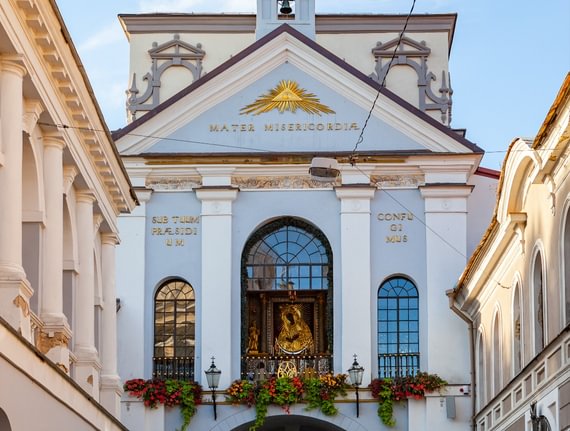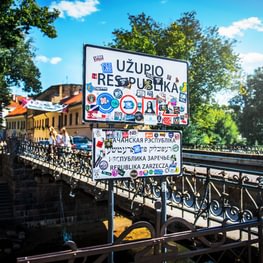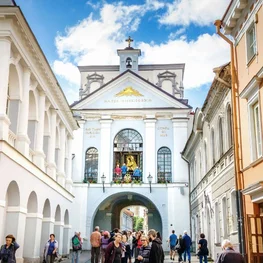Celebrate Divine Mercy Week where it began - in Vilnius
Divine Mercy Week is celebrated from Easter Monday until Divine Mercy Sunday. The feast serves to remind believers of the unlimited Mercy of God, no matter how hopeless a situation may seem. The first Divine Mercy Week was celebrated in 1935 on the first Sunday after Easter, when the Image of Divine Mercy was hung in the window at the Gate of Dawn chapel in Vilnius. Pope John Paul II officially established the feast in 2000, and today Catholics in Lithuania and around the world celebrate Divine Mercy Sunday as one of the most important feasts of the year.
Vilnius - Home of the Original Image of Divine Mercy
The world-famous painting of the Merciful Jesus, known as the Image of Divine Mercy, is one of the most well-known and venerated paintings in the Catholic Church, famous for the grace it bestows on visitors. Eugene Kazimirowski painted it in 1934 in Vilnius according to the visions of Saint Faustina. Copies of the painting soon spread around the world and today the image is widely used; however, the original hangs in the Shrine of Divine Mercy in Vilnius. Hidden for many years, the original Image of Divine Mercy was only rediscovered and restored within the last 16 years, and can now be appreciated in its full splendour.
Vilnius, often called a City of Divine Mercy by pilgrims, was an important place for sister Faustina Kowalska, who experienced visions and revelations of Jesus and had conversations with him while living in the city. The Chapel of the Divine Mercy that has spread all over the world was also dictated to Sister Faustina in Vilnius. Pope John Paul II canonised Sister Faustina in 2000, on Divine Mercy Sunday.
Virtual Experience of the Shrine of Divine Mercy
You don’t need to travel to Vilnius to participate in the mass or to see the famous Image of Divine Mercy for yourself. A 3D model of the Shrine of Divine Mercy and the painting itself is available to explore online at: www.divinemercy3d.com. You can take a 360° virtual tour and even a VR journey. It is especially relevant today when pilgrimage journeys must find new roads. The model was created to commemorate the recent visit of Pope Francis, and the cutting-edge technology mirrors every inch of both the Shrine and Image of Divine Mercy.
Explore Vilnius as a Pilgrimage Destination
Almost all of Lithuania’s history can be told in its churches, so it’s no surprise that the country has a deep tradition as a pilgrimage destination. Vilnius is special because the main Christian denominations are clearly visible on the narrow streets of the Old Town – there are Catholic, Russian Orthodox, and Lutheran churches, Greek Catholic prayer houses and more.
The UNESCO-listed Old Town is a perfect place to explore the city’s sacral history. The path of Mercy found here begins with the special works of St. Faustina, who lived in Vilnius and spread the message of God’s Mercy to the world, and allows you to follow various pilgrimage routes, including the Route of St. Pope John Paul II, the Way of Saint James, the Calvary Way of the Crosses, and many others.
Experience a History of Your Own Pilgrimage
We invite you to experience Vilnius’ most holy places, feel the Mercy of God, and witness the seven works of mercy for the body and soul. Explore Vilnius virtually – a City of Mercy.














